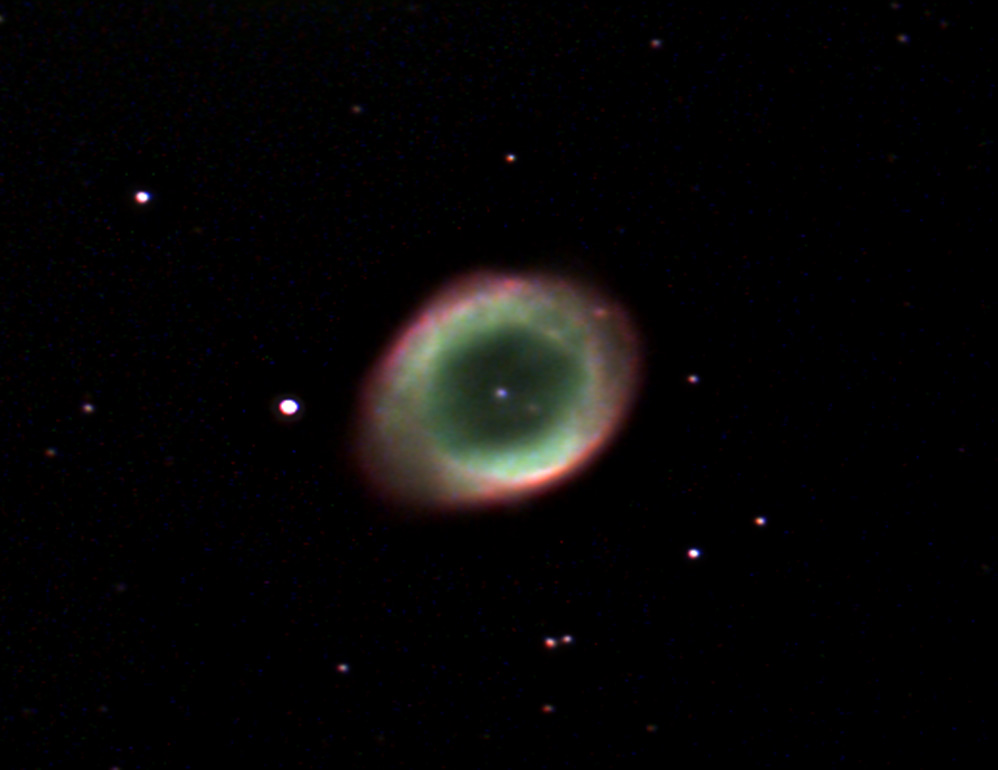Why refractor instead of the 17.5" f/4.5 reflector? An apochromatic refractor will generally give far more magnifications without loss of sharpness than a reflector of similar diameter. I found that 284x was about the upper limit on the Moon and Saturn. Above that (using a 6mm eyepiece with a 3x Barlow, for 375x), image was starting to fuzz. Also the refractor is on a clock driven mount so it stays on planets and the Moon for minutes at a time without adjustment--very important for public astronomy.
I rolled out Big Bertha night before last under very similar atmospheric conditions. At 400x, image quality was just fuzzing. At 500x, not worth doing. So what is Big Bertha's mission? The 17.5" mirror gathers 12.25x as much light as the refractor. For deep sky objects, like the Ring Nebula:
the refactor shows at best a faint blur. Big Bertha shows a greenish ring. Tonight I will probably go hunting the Whirlpool Galaxy.
I doubt it will be that good.


No comments:
Post a Comment